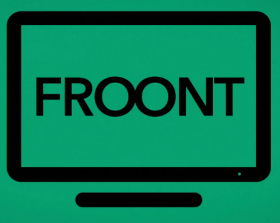 Froont, a Fall 2012 graduate from Startup Sauna accelerator program just announced that they have raised €150 000 Inventure. The startup is building a prototyping solution for designing responsive websites. It is basically a visual tool that eliminates the need for coding and allows for focusing on design, while allowing to demonstrate a functioning website as opposed to a bunch of JPG’s and Photoshop files.
Froont, a Fall 2012 graduate from Startup Sauna accelerator program just announced that they have raised €150 000 Inventure. The startup is building a prototyping solution for designing responsive websites. It is basically a visual tool that eliminates the need for coding and allows for focusing on design, while allowing to demonstrate a functioning website as opposed to a bunch of JPG’s and Photoshop files.
The investment comes as an open term sheet deal between Inventure and Startup Sauna whereby Inventure vouches to invest in up to 3 start-ups per year. The allocated funds for this co-operation are at €300 000 per year. The base deal is €100 000 for a 15% stake in the company. Inventure is aiming to invest in at least one startup from each batch, however this investment seems to be the first one of the kind. We did not get the exact equity split on the deal, but if they were sticking to the 15% number then Froont’s valuation is at €1 million before they even opened shop.
We have met the Froont team at Tech Chill Baltics, where we had the chance to play around with the closed beta. It was fun and intuitive, even with my limited design skills I was able to put a decent looking website together. Unfortunately it remained a prototype and I was unable to export my creation. However, the team did mention that this feature is in the pipeline.
For those of you who are unaware of the “Responsive Web Design (RWD)” term, it is basically a new strand of web design approach that makes sure that the same website is viewed optimally on any type of a device. No matter what size or shape it is, although it may have a problem with triangular screens. Recently, many of the top websites have adapted this new approach. For example: The Next Web, Mashable, Microsoft and others.
This means that with the increasing need for responsive design, the competition in this space is already tightening up. Adobe has recently released ReFlow, which is also aiming to enter the same space as Froont. While other big players in the market are also working on tools that are somewhat similar to Froont. So timing is of the essence here and to succeed they need to rush it to the market.
“It is natural to actually see what you are designing. That’s why many people are still using Photoshop for the job, but it is made for image retouching and although served well long enough, it is not suited to design fluid layouts.” Says Sandijs Ruluks, the CEO. “With Froont designers have to spend less time designing a mobile friendly website and the client can see the result right away, even on his mobile device. The future of the web is mobile centred, so is Froont. Less repetitive tasks – more focus on the design process.”
Here is a video of Froont in action:




